Apothecary jars
The Victor Hoffbrand Collection
This collection of apothecary jars – used for storing medicines and their ingredients – is the largest privately owned collection of English delftware apothecary jars in the country. Comprising 207 items dating from the 1640s to 1745, the collection is on loan to the RCP Museum from Professor Victor Hoffbrand, FRCP.
These tin-glazed ceramic jars would have been used by apothecaries (chemists) to store medicinal preparations and ingredients. With their decorative Latin labels and hand-painted patterns the jars were functional, attractive and fashionable, designed to impress customers and fellow medical practitioners. The jars provide a fascinating insight into the substances prepared and sold to treat diseases over 300 years ago.

English tin-glazed earthenware wet drug jar painted in blue with a cartouche inscribed 'U DIALTH', London, 1700. Angel and scallop shell design. Contained ointment of marshmallows.
English tin-glazed earthenware wet drug jar painted in blue with a cartouche inscribed 'U DIALTH', London, 1700. Angel and scallop shell design. Contained ointment of marshmallows.
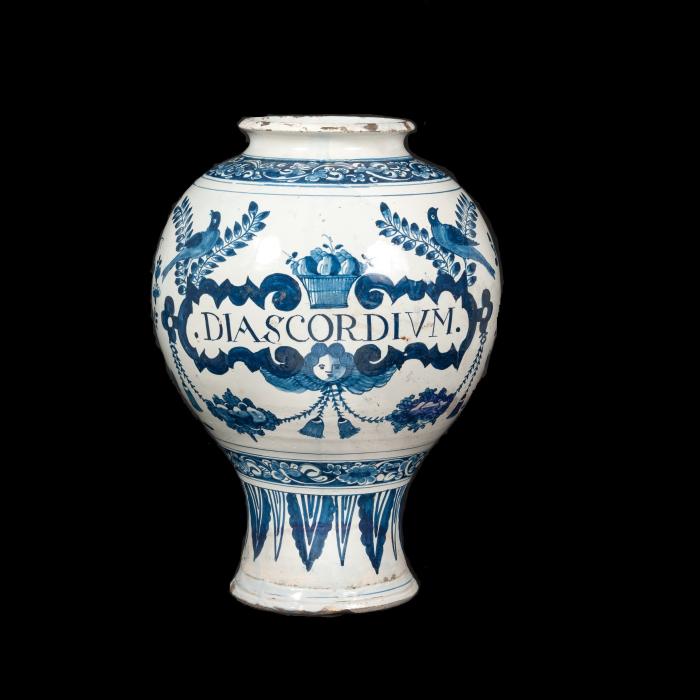
English tin-glazed earthenware dry drug jar painted in blue with a cartouche inscribed 'DIASCORDIVM' Bristol (?) c.1720
English tin-glazed earthenware dry drug jar painted in blue with a cartouche inscribed 'DIASCORDIVM' Bristol (?) c.1720
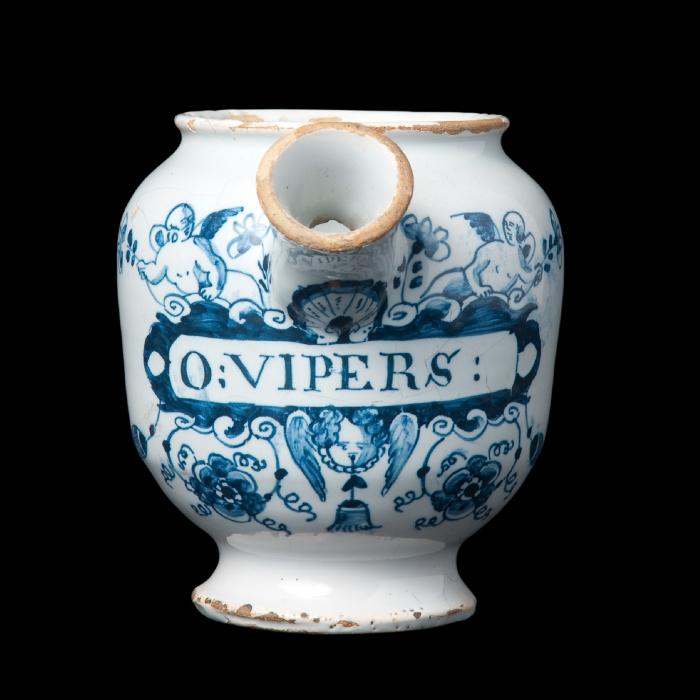
English tin-glazed earthenware wet drug jar painted in blue with a cartouche inscribed 'O VIPERS', England, 1740
English tin-glazed earthenware wet drug jar painted in blue with a cartouche inscribed 'O VIPERS', England, 1740
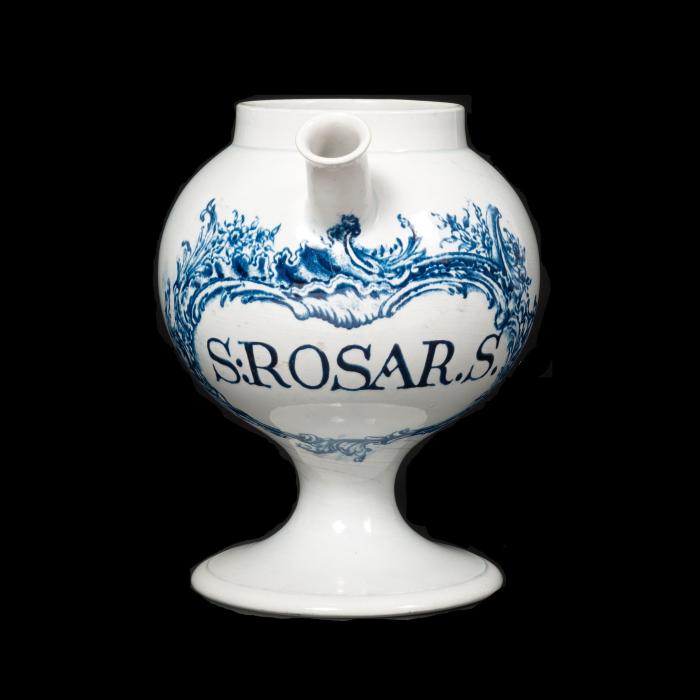
English lead-glazed creamware wet drug jar painted in blue with a cartouche inscribed 'S ROSAR S', Staffordshire, 1770.
English lead-glazed creamware wet drug jar painted in blue with a cartouche inscribed 'S ROSAR S', Staffordshire, 1770.
Shapes and functions
The jars originally had parchment, vellum or fabric lids tied on to protect their contents, which have not survived to today. English delftware apothecary jars had four main shapes and functions:
- 'Wet jars' held liquid preparations - they have a spout and usually a handle at the back
- 'Dry jars' held dry ingredients - they are cylinder-shaped and taper at top and bottom
- Large 'dry jars' often feature the coat of arms of the Society of Apothecaries and were used for display only
- Small 'dry jars' were used to hold pills and lozenges
Designs
Common features of an Apothecary jars display included a Latin inscription labelling the jar's contents, a decorated cartouche surrounding the inscription and the most valuable jars have a date and the initials of the apothecary who commissioned them.
Contents of apothecary jars
The jars provide a fascinating insight into the substances prepared and sold to treat diseases over 300 years ago. John Quincy, who owned one of the jars in the collection, wrote A Compleat English Dispensatory in 1718, describing many of the preparations' ingredients and uses. Some of the contents found in Quincy's dispensatory included substances such as Oxymel of squills, made of the vinegar of squills (sea onions) boiled with honey’. Quincy explained: 'It is a mighty good Puke for Children, and greatly helps to keep their Stomachs, and tender Organs of Respiration, clear from that Phlegm and Viscidity, with which they are so apt to be stuffed, and sometimes quite suffocated.'
In 1653, Nicholas Culpeper wrote in his Compleat Herbal that 'swallows, being eaten, clear the sight, the ashes of them (being burnt) eaten, preserves from drunkenness, helps sore throats being applied to them, and inflammations'. He also included a preparation known as a Lohoch of fox's lungs. Culpeper described dried fox lungs as 'an admirable strengthener to the lungs.'
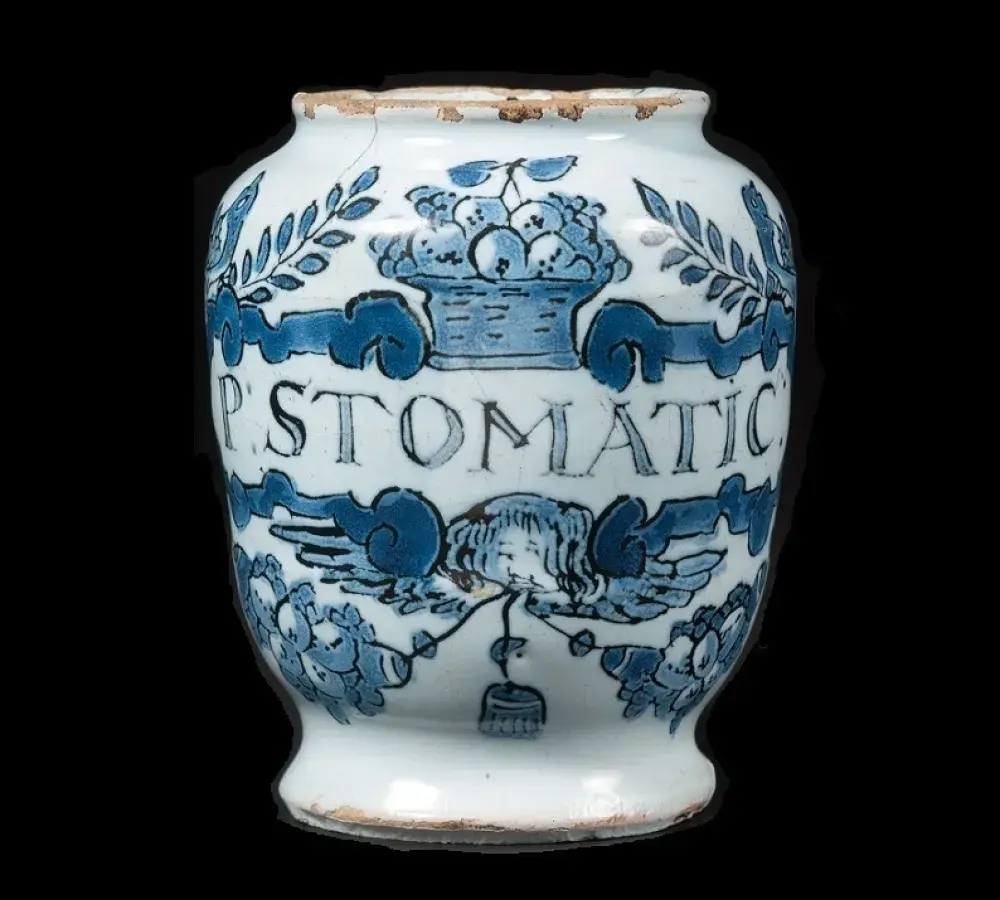
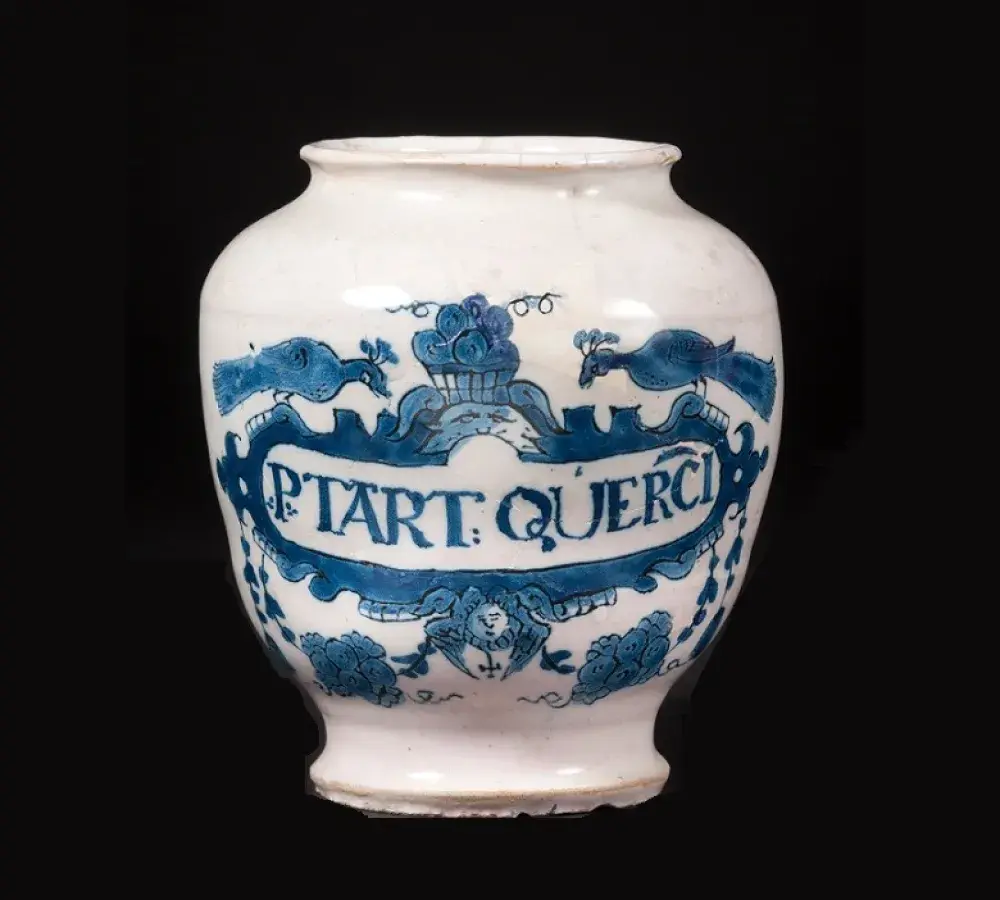
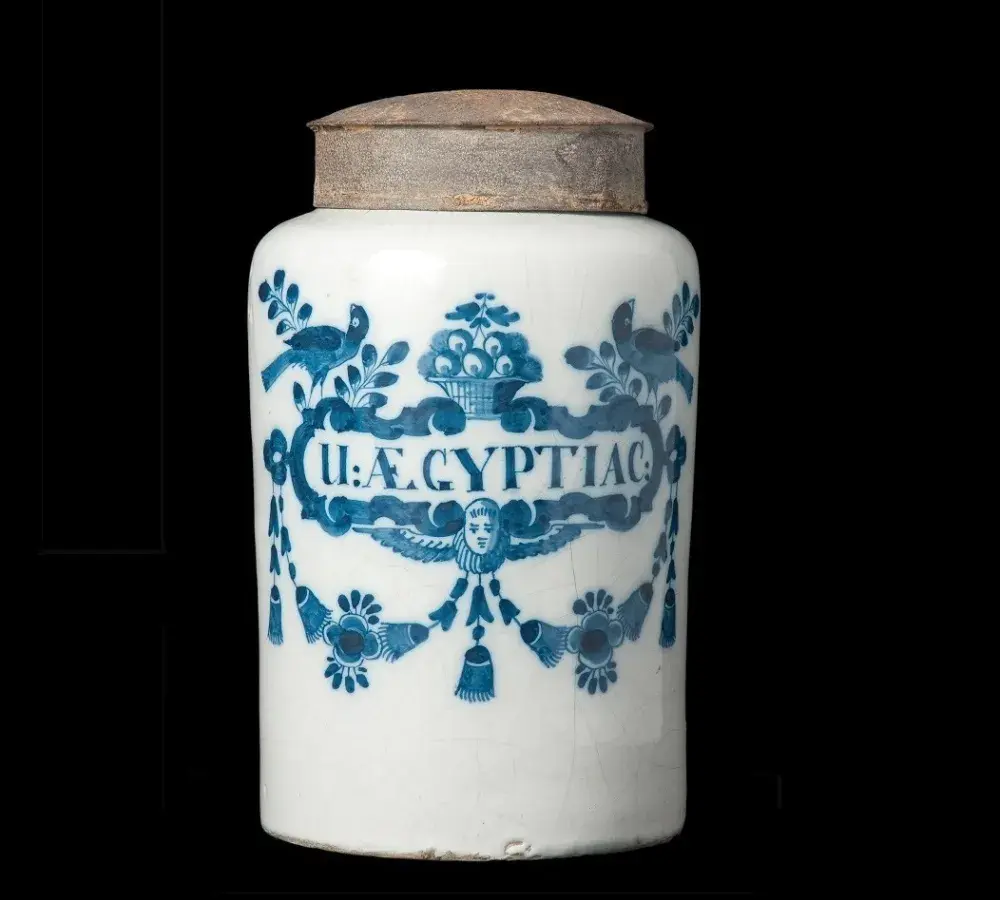
To uncover a wealth of information about the collections held at the RCP, search our archive and museum catalogue. If you would like to view a collection item in person you can book a research appointment.
